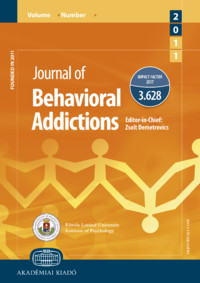Aberrant orbitofrontal cortex reactivity to erotic cues in Compulsive Sexual Behavior Disorder
Aberrant orbitofrontal cortex reactivity to erotic cues in Compulsive Sexual Behavior Disorder
Author(s): Karolina Golec, Małgorzata Draps, Rudolf Stark, Agnieszka Pluta, Mateusz GolaSubject(s): Behaviorism
Published by: Akadémiai Kiadó
Keywords: compulsive Sexual Behavior Disorder; fMRI; erotic stimuli; incentive salience
Summary/Abstract: Background and aims: Compulsive Sexual Behavior Disorder (CSBD) is characterized by increased reactivity to erotic reward cues. Cue-encoded reward parameters, such as type (e.g. erotic or monetary) or probability of anticipated reward, shape reward-related motivational processes, increase the attractiveness of cues and therefore might enhance maladaptive behavioral patterns in CSBD. Studies on the neural patterns of cue processing in individuals with CSBD have been limited mainly to ventral striatal responses. Therefore, here we aimed to examine the cue reactivity of multiple key structures in the brain’s reward system, taking into account not only the type of predicted reward but also its probability. Methods: Twenty Nine men seeking professional help due to CSBD and 24 healthy volunteers took part in an fMRI study with a modified Incentive Delay Task with erotic and monetary rewards preceded by cues indicating a 25%, 50%, or 75% chance of reward. Analyses of functional patterns of activity related to cue type and probability were conducted on the whole-brain and ROI levels. Results: Increased anticipatory response to cues predictive of erotic rewards was observed among CSBD participants when compared to controls, in the ventral striatum and anterior orbitofrontal cortex (aOFC). The activity in aOFC was modulated by reward probability. Discussion and conclusions: Type of anticipated reward (erotic vs monetary) affects reward-related behavioral motivation in CSBD more strongly than reward probability. We present evidence of abnormal aOFC function in CSBD by demonstrating the recruitment of additional subsections of this region by erotic reward cues.
Journal: Journal of Behavioral Addictions
- Issue Year: 10/2021
- Issue No: 3
- Page Range: 646-656
- Page Count: 11
- Language: English

